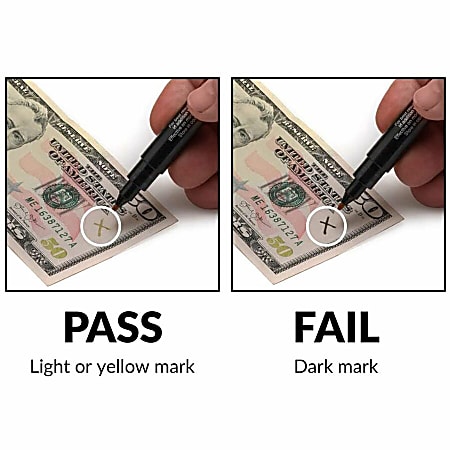Safeguard Deals: Buy copyright Money offer for sale Safely
Safeguard Deals: Buy copyright Money offer for sale Safely
Blog Article
Explore the Uses of Funny Money in Artistic Creations and Theatrical Performances
Phony cash, usually identified with deceptiveness and outrage, holds a strange allure when it discovers its method into the world of staged performances and creative creations. As we delve right into the multifaceted usages of fake cash in these creative domains, we start to reveal a globe where credibility and replica blur, triggering us to question the actual nature of value and representation within art and performance.
Historic Relevance of Imitation Cash in Art
The historical value of imitation cash in art is a facility and interesting topic that sheds light on the crossway of imagination, subversion, and socio-political commentary. Throughout background, artists have actually utilized funny money as a device for difficult societal standards, examining the worth of money, and making powerful statements regarding riches and power.
One of one of the most notable examples of fake cash in art go back to the Dada motion of the very early 20th century - copyright money for sale. Musicians such as Marcel Duchamp and Hannah Höch integrated phony money into their works to slam the capitalist system and check out the principle of value in a quickly altering world
Additionally, throughout times of economic instability or political upheaval, funny money has been used by musicians as a type of protest or disobedience. By creating and circulating copyright, artists have actually been able to disrupt the status, obstacle authority, and prompt important discussions regarding the duty of cash in culture.
Influence of copyright Currency on Visual Arts
By integrating phony money into their works, artists provoke discussions on the nature of value, authenticity, and societal understandings of wealth. The usage of phony cash in art also raises ethical factors to consider regarding the limits of artistic expression and the implications of reproducing legal tender. In general, the influence of copyright money on aesthetic arts is multifaceted, promoting crucial representations on the crossway of money, art, and social values.
Meaning and Significance in Theatrical copyright Displays
Using staged imitation screens, musicians use symbolic depictions to share much deeper definitions and evoke provocative analyses within the world of performance art. Through the incorporation of funny money in theatrical productions, makers can discover motifs such as greed, power, corruption, and the impression of wealth. The usage of copyright on stage can serve as a metaphor for societal concerns, economic differences, and the delicacy of economic systems.
In staged performances, the symbolic worth of fake cash expands past its monetary worth. It can signify the misleading nature of looks, the search of materialistic desires, and the consequences of underhanded habits. By utilizing funny money as a prop, musicians can challenge audiences to read what he said examine the real definition of wealth and the honest boundaries that individuals might cross in its quest.
Moral Considerations being used Fake Cash for Art

One major moral consideration is the prospective lawful effects of making use of funny money in art. Counterfeiting money is prohibited in a lot of countries and can result in serious repercussions for musicians who knowingly include copyright expenses right into their work. copyright money for sale. This not only places the artist at risk however additionally questions about promoting illegal tasks through art
Additionally, there is a moral issue relating to the authenticity of the art work itself. Utilizing phony cash blurs the line in between reality and imitation, possibly tricking customers and jeopardizing the integrity of the artistic item. Musicians need to take into consideration whether making use of funny money straightens with their worths and creative intents, weighing the possible influence on their credibility and reputation.
Future Trends in Funny Money Integration
Taking into consideration the advancing landscape of artistic expression, the consolidation of copyright money in innovative jobs may witness a change towards intriguing and cutting-edge methods. As musicians remain to push limits and check out new tools, phony cash might significantly be made use of to test social norms, examine the value of money, or make effective statements about wealth and consumerism.
One future fad in phony cash integration might be its usage in immersive art setups where audiences are motivated to connect with browse this site the items, blurring the lines between truth and illusion. In addition, advancements in technology may cause the creation of hyper-realistic funny money that is essentially equivalent from genuine money, opening possibilities for a lot more detailed and detailed art work.
In addition, partnerships in between counterfeiters and artists can lead to one-of-a-kind pieces that combine standard imaginative methods with the workmanship of producing funny money. Ethical considerations bordering the legitimacy and morality of utilizing copyright cash in art will certainly proceed to be a point of contention as these future patterns unfold.
Conclusion
Finally, usings copyright in staged efficiencies and imaginative creations have a long history and proceed to be a source of motivation for musicians. From its historic significance to its influence on aesthetic arts and symbolism in staged displays, phony cash plays a distinct duty in the art globe. Ethical considerations must be taken right into account when making use of copyright cash for imaginative objectives. The assimilation of funny money in art is most likely to continue developing in the future.
Overall, the influence of phony currency on visual arts is complex, promoting important reflections on the intersection of money, art, and societal values.

In conclusion, the usages of copyright money in imaginative creations and theatrical performances have a lengthy background and continue to be a resource of ideas for artists. Honest factors to consider need to be taken right into account when utilizing phony money for innovative purposes. The combination of copyright money in art is likely to proceed progressing in the future.
Report this page